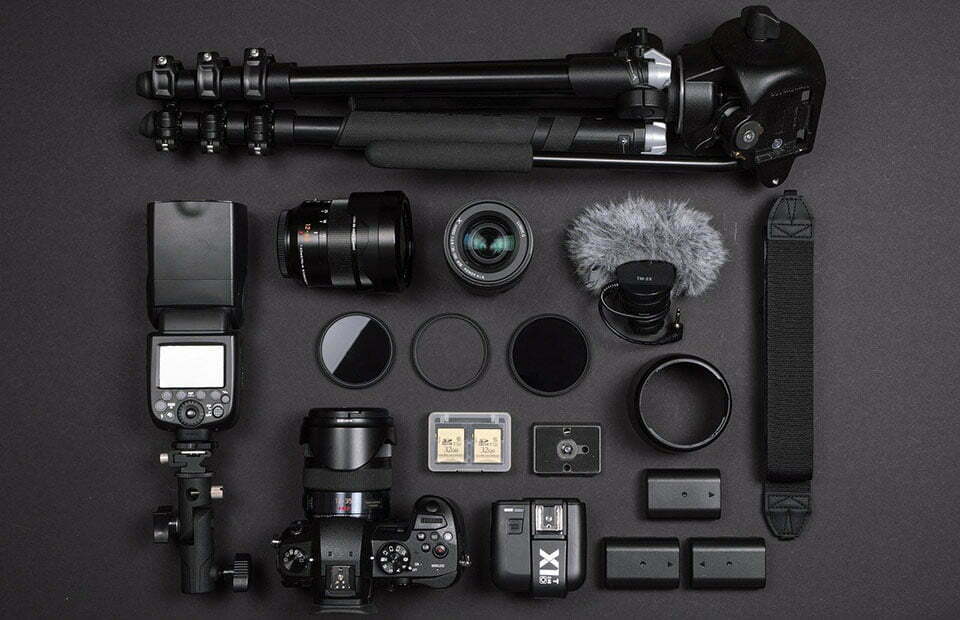Like most things in life when you first experience something, you are often not sure how to do it. The same can be true when buying your first digital camera. You will undoubtedly be more overwhelmed with facts, numbers, and jargon than you know what to do with. In this article, we’ll try to help you with some of the basics of digital camera terms and show you what to look for when buying a digital camera. Some features may only interest you if you need your camera for specific tasks, but it’s always helpful to know exactly what you’re buying so you can pick up a good deal when you see one.
Contents
Basics of Digital camera
1. Megapixels
One of the first basics of digital cameras that you will hear a lot about is the megapixel. Camera resolution is measured and reported in megapixels. The idea behind this scaling is how many pixels the camera should take a picture with. In this case, the higher the number, the better quality you will be able to take. For example, if you buy a 4MP camera, the photos you take with this camera will be able to capture 4 million pixels. Obviously when you consider that a 2MP camera will not create as clear or detailed a picture as a 4MP camera.
If you often print your photos to your computer or send them away to be printed, your camera’s pixel rating can be very important to you. Higher megapixels on your camera will allow you to make prints larger while maintaining quality. If you try to print an image that is too large for what the camera was designed for, the image will drastically lose its quality.
The last thing to know about megapixels is that the higher the resolution you shoot the more space on your memory card. A photo taken with a 4MP camera will need twice the space on the memory card than a photo taken with a 2MP camera. Check if you want the high-quality photos to have enough memory on your camera to back them up. Either you have spare media cards to plug in once you use up your space.
2. Digital Zoom and Optical Zoom
The second thing in the Basics of digital camera is the type of zoom. No doubt when you buy a camera, you want some sort of zoom feature to capture that stuff in your close and far shots.
This is a troublesome area for some first time buyers. There are two types of zoom on the market for digital cameras. Digital zoom and optical zoom. The only thing that really matters is the optical zoom, and that’s right the true zoom function that brings things closer to you using the camera’s optics. Digital zoom is similar to using the zoom function in a photo editing software package. Enlarges a portion of the image so that it appears as if it were closer to you.
Anything you can do with the digital zoom you can do with a photo editing package so don’t splash too much money on a camera with digital zoom only. Sometimes you will also so “total zoom” advertised this means the number that is quoted here is the magnification of the optical zoom added to the digital zooms magnification. Try to find out the magnification level of the optical zoom alone for the true value of the camera.
3. Aperture Size
We might go a little further than some of you might want to care, But bear with us because the size of the aperture can have a huge impact on your photos, which is the second most important thing in the Basics of digital camera. The size of the aperture determines exactly how much light is allowed into the camera when the photo is taken. Think of the aperture like the iris of your eye. Not a huge issue you might think of, but having more light allows you to take better photos in a wide variety of lighting conditions, cloudy days are a prime example of this.
With a large enough aperture, you would be less likely to need the flash, personally, I don’t like to use the flash function, the artificial flash of light does not always do justice to the picture you are trying to take. Also, effects like red eye are also common.
4. Shutter Speed
Shutter speed may be missed by many when talking about the basics of Digital cameras. Cool effects can be created on photos using a variety of shutter speeds. The thing to look for when buying a digital camera that is suitable in terms of shutter speeds is the widest range you can find. This will give you the best chance of manipulating the image the way you want it. Combined with the proactive aperture, the shutter speed can bring photos to life or freeze photos in an instant.
This technique is great when you want to take moving objects exactly how they look as if they were still. Setting the shutter speed on a slower setting gives more exposure to the CCD (charge-coupled device – the digital equivalent of the film). The effect is that the picture almost seems to run. Moving objects are slightly blurred. You may think this is a bad thing but take an example of running water leaving the shutter speed on for longer will soften the image creating a pleasing image to the eye much like the way a waterfall appears in real life.
Read: Best Deleted File Recovery Software
Take digital photography to the extreme with a camera with a very wide range of shutter speeds. With an incredibly slow shutter speed, you can get long exposure to CCD and then receive famous traffic scenes where the headlights blend into each other in a continuous stream.
5. Storage Media
Digital cameras come with a slot for a variety of media cards. When purchasing your camera, check what type of storage media you require. There are many popular types including smart media, compact flash, and xD photo cards. As long as you know your type, you should be safely able to get the right type. Always ask at your local store if you are unsure. If you give them your make and model, they should be able to point you in the right direction.
The media card size you choose depends on your budget but you can get as much as you can. More memory means you don’t have to change media cards, and you’ll be able to take photos of the highest quality all the time. You’ll soon learn the benefits of having plenty of storage space when you start using the camera regularly. Therefore, it is one of the important things in the Basics of digital cameras.
The good thing about the camera’s media is that it’s just like a movie if you run out of it, you can simply bring in another movie if you have one with you. It can be a bit annoying when downloading your photos to your computer but it is much less painful than having to delete some photos because you have free space on your media card.

Digital Camera Accessories You Really Need
In just about any tech product these days, you’re bound to have a few options for accessories. This is no different with digital cameras. The problem is that the average consumer can get a little confused when trying to decide what accessories they really need for their camera. Especially coming from a pushy salesperson.
My goal here in this article after going through the Basics of digital camera is to give some ideas of what you should really consider when buying digital camera accessories.
- Extra battery! For me personally, this is number one on my list of digital camera accessories. I don’t know how many times I’ve been in a secluded place and the camera decided to turn off because the battery was dead. Most digital cameras today consume a huge amount of power, and unfortunately the only solution is to carry plenty of spare batteries on the side. There is a camera with batteries that you can recharge, of course these batteries are more expensive, but the same rules apply. You’ll need to charge these batteries a lot, so carrying an extra battery will definitely help keep your photoshoot going!
- Digital Camera Software While you might have taken the worst photo in the history of photography (well, that would be pretty hard to get it done) the good news is that you can often correct errors with software. Fixing aspects such as red-eye effect and brightening can turn a photograph into a professional-looking image.
- Tripod – This is one of the main items that professionals use all the time. This will allow you to take pictures with a more balanced look. The trick with this one is to have one that is relatively easy to carry. Some tripods can be very bulky and cumbersome.
- Carrying case – When you spend a few hundred bucks on a good camera, you really need to find something that will protect it from the elements of nature as well as the accidental falls to the ground. Try looking for one that provides ample cushioning for your camera.
- Other Flash – This is also known as “External Flash” and is really for more professional and advanced users. The most obvious advantage of this flash is that it provides much better lighting than a normal camera.
There are more accessories you can buy, but these are some of the basics, for now, to get you started.




